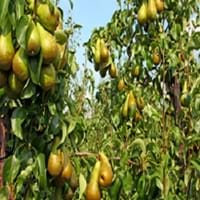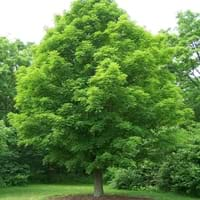Life Span
Perennial
Perennial
Origin
Western Europe
North America, United States, Northeastern United States, Mid-Atlantic United States, Southeastern United States, North-Central United States, Central United States, South-Central United States, Canada
Types
Pyrus amygdaliformis, Pyrus armeniacifolia, Pyrus bourgaeana
not available
Number of Varieties
Not Available
Habitat
Dappled Shade, Sunny Edge, Woodland Garden Secondary
Forest edges, Open areas, Roadsides, wastelands
USDA Hardiness Zone
5-9
4-8
Sunset Zone
2a, 2b, 3a, 3b, 4, 5, 6, 7, 8, 9, 14, 15, 16, 17, 18
1a, 1b, 2a, 2b, 3a, 3b, 4, 5, 6, 7, 8, 9, 14
Habit
Oval or Rounded
Oval or Rounded
Flower Color
Not Available
Chartreuse
Flower Color Modifier
Bicolor
Bicolor
Fruit Color
Not Available
Tan
Leaf Color in Spring
Not Available
Green, Dark Green
Leaf Color in Summer
Not Available
Green, Dark Green
Leaf Color in Fall
Not Available
Yellow, Red, Orange, Gold, Pink, Orange Red
Leaf Color in Winter
Light Green
Not Available
Leaf Shape
Oblong
Maple shaped
Plant Season
Spring, Fall
Spring, Summer, Fall
Sunlight
Full Sun, Partial Sun
Full Sun, Partial Sun
Type of Soil
Loam
Clay, Loam, Sand
The pH of Soil
Acidic, Neutral
Acidic, Neutral
Soil Drainage
Well drained
Well drained
Bloom Time
Spring
Early Spring
Tolerances
Drought
Not Available
Where to Plant?
Ground
Ground
How to Plant?
Seedlings
Stem Planting
Plant Maintenance
Medium
Medium
Watering Requirements
Medium
Requires regular watering
In Summer
Lots of watering
Lots of watering
In Spring
Moderate
Moderate
In Winter
Average Water
Average Water
Soil pH
Acidic, Neutral
Acidic, Neutral
Soil Type
Loam
Clay, Loam, Sand
Soil Drainage Capacity
Well drained
Well drained
Sun Exposure
Full Sun, Partial Sun
Full Sun, Partial Sun
Pruning
Remove crossing or rubbing branches, Remove damaged leaves, Remove dead branches, Remove dead leaves, Remove dead or diseased plant parts
Remove damaged leaves, Remove dead leaves
Fertilizers
All-Purpose Liquid Fertilizer
Doesn't require fertilization when grown in rich soil
Pests and Diseases
Red blotch
Red blotch
Plant Tolerance
Drought
Drought
Flowers
Yes
Insignificant
Flower Petal Number
Not Available
Not Available
Foliage Texture
Not Available
Medium
Foliage Sheen
Not Available
Matte
Attracts
Birds, Not Available
Not Available
Allergy
Itchiness, Mouth itching, Pollen, Sore Throat
Asthma
Aesthetic Uses
Not Used For Aesthetic Purpose
Showy Purposes
Beauty Benefits
Good for skin and hair
Not Available
Environmental Uses
Air purification, Nesting sites for birds, Shadow Tree, Windbreak
Air purification
Medicinal Uses
Analgesic, Diuretic, Heart problems, High cholestrol, Stomach pain, Weight loss
Cough, Diarrhea, Diuretic, Expectorant, Sore Eyes
Part of Plant Used
Fruits, Wood
Whole plant
Other Uses
Used as a dye, Used for woodware
Edible syrup, Used as Ornamental plant
Used As Indoor Plant
No
No
Used As Outdoor Plant
Yes
Yes
Garden Design
Feature Plant, Fruit / Fruit Tree
Feature Plant, Shade Trees
Botanical Name
PYRUS 'Bosc'
ACER saccharum
Common Name
Bosc Pear, Pear
Sugar Maple
In Hindi
Bosc Pear Tree
चीनी मेपल
In German
Bosc Pear Tree
Zuckerahorn
In French
Bosc Pear Tree
sucre d'érable
In Spanish
Bosc Pear Tree
arce de azúcar
In Greek
Bosc Pear Tree
Maple ζάχαρη
In Portuguese
Bosc Pear Tree
Bordo de Açucar
In Polish
Bosc Pear Tree
Cukier klonowy
In Latin
Orbis Bosc ligno
Sugar Maple
Phylum
Magnoliophyta
Magnoliophyta
Class
Magnoliopsida
Magnoliopsida
Family
Rosaceae
Aceraceae
Clade
Angiosperms, Eudicots, Rosids
Angiosperms, Eudicots, Rosids
Tribe
Maleae
Not Available
Subfamily
Amygdaloideae
Not Available
Number of Species
Not Available
Importance of Bosc Pear and Sugar Maple
Want to have the most appropriate plant for your garden? You might want to know the importance of Bosc Pear and Sugar Maple. Basically, these two plants vary in many aspects. Compare Bosc Pear and Sugar Maple as they differ in many characteristics such as their life, care, benefits, facts, etc. Every gardener must at least have the slightest clue about the plants he wants to plant in his garden. Compare their benefits, which differ in many ways like facts and uses. The medicinal use of Bosc Pear is Analgesic, Diuretic, Heart problems, High cholestrol, Stomach pain and Weight loss whereas of Sugar Maple is Cough, Diarrhea, Diuretic, Expectorant and Sore Eyes. Bosc Pear has beauty benefits as follows: Good for skin and hair while Sugar Maple has beauty benefits as follows: Good for skin and hair.
Compare Facts of Bosc Pear vs Sugar Maple
How to choose the best garden plant for your garden depending upon its facts? Here garden plant comparison will help you to solve this query. Compare the facts of Bosc Pear vs Sugar Maple and know which one to choose. As garden plants have benefits and other uses, allergy is also a major drawback of plants for some people. Allergic reactions of Bosc Pear are Itchiness, Mouth itching, Pollen and Sore Throat whereas of Sugar Maple have Asthma respectively. Having a fruit bearing plant in your garden can be a plus point of your garden. Bosc Pear has showy fruits and Sugar Maple has showy fruits. Also Bosc Pear is flowering and Sugar Maple is not flowering . You can compare Bosc Pear and Sugar Maple facts and facts of other plants too.





